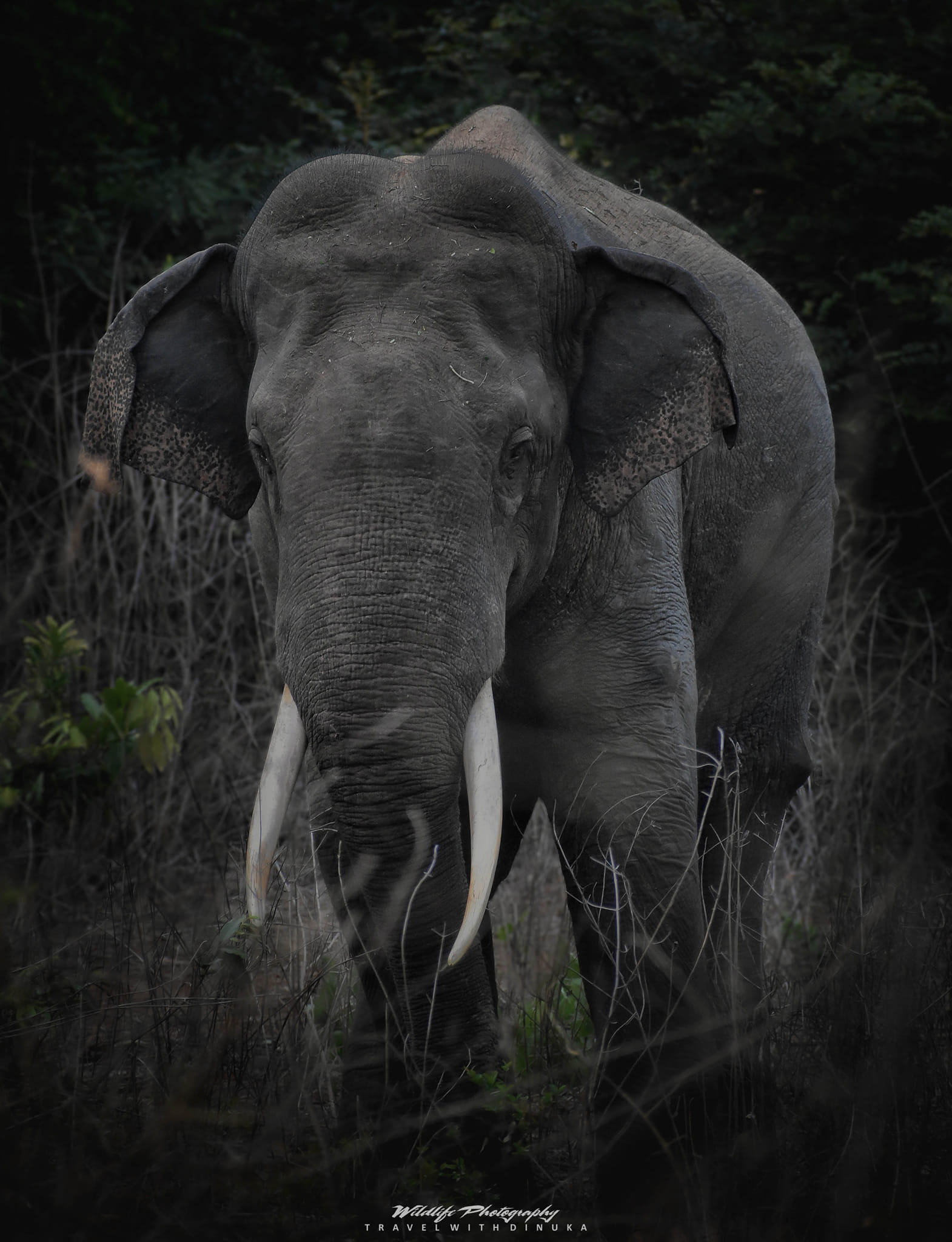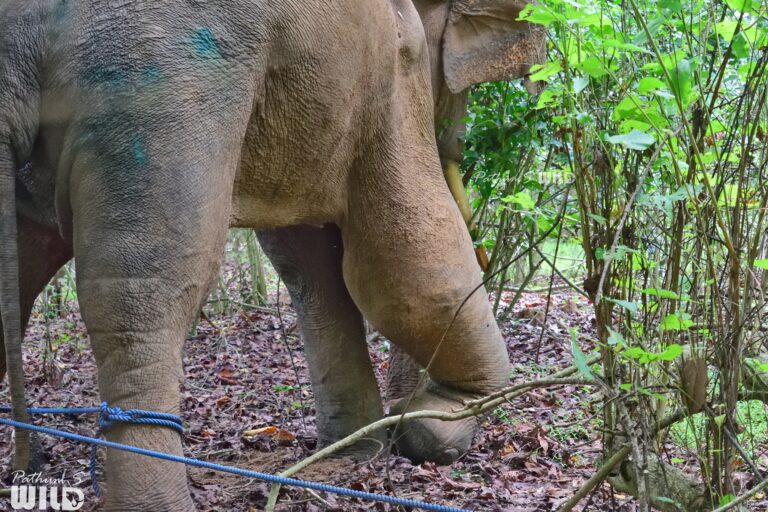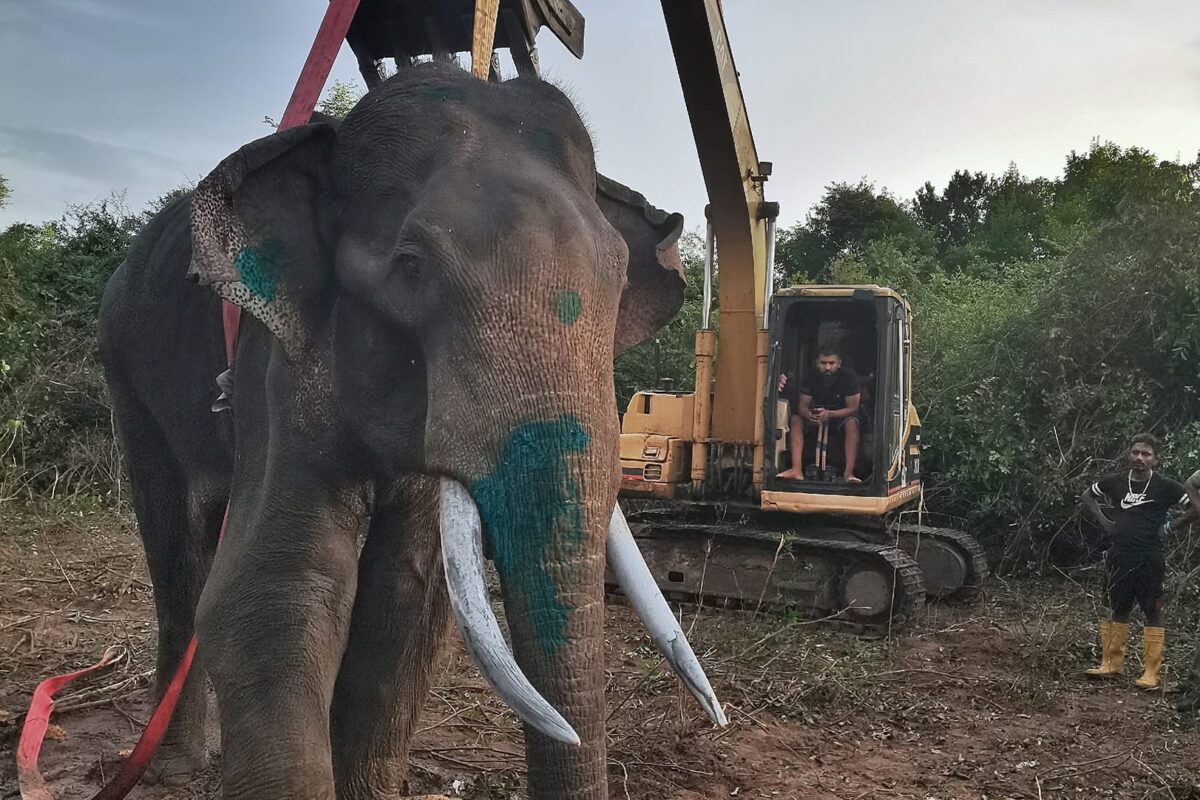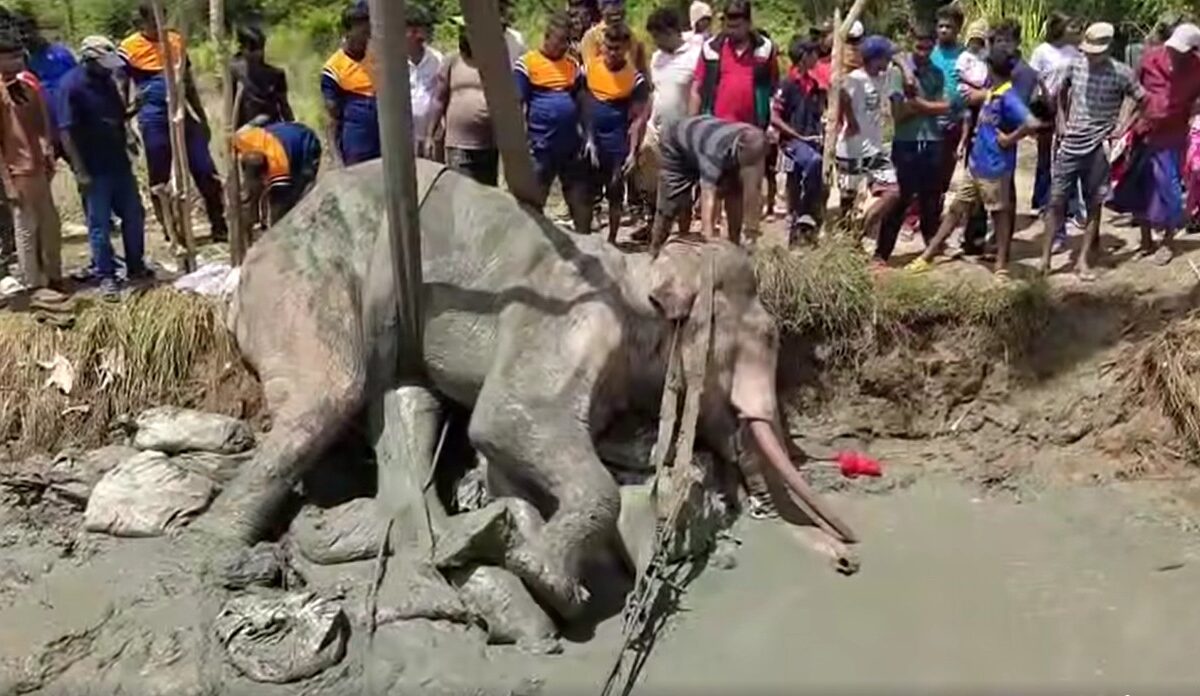- Bhathiya, an iconic Sri Lankan tusker, suffered multiple gunshot wounds that left him immobilized and eventually led to his collapse.
- His prolonged suffering drew media coverage, public outrage and political attention. After weeks of struggle, Bhathiya died in agony.
- This incident has reignited debate on euthanasia and whether it should be considered in cases where veterinary assessments deem recovery unlikely.
- As the nation mourns the loss of this majestic elephant, the tragedy underscores the urgent need for a lasting solution to human-elephant conflict, as the elephant death rate in Sri Lanka, among the worst in the world, continues to rise at an alarming rate.
COLOMBO — Bhathiya is a tusker whose towering presence once symbolized the majestic beauty of Sri Lanka’s wild elephants (Elephas maximus). But his life took a tragic turn when he sustained gunshot injuries that led to a slow and painful battle for survival, highlighting the harsh reality of human-elephant conflict in the Indian Ocean island.
According to Tharaka Prasad, director of wildlife health with the Department of Wildlife Conservation (DWC), Bhathiya was first reported with a badly swollen front right leg mid-May. The elephant also had difficulties in lifting its trunk, which Prasad considers to be a result of nerve pressure due to another gunshot aimed at its head.
Although Bhathiya was initially able to move, his condition steadily deteriorated. As he struggled to maneuver his trunk, the wildlife team had to feed him by placing food directly into his mouth using a long stick. By early June, he collapsed near a small man-made tank, partially submerged in water — too weak to stand.
The incident triggered an urgent rescue effort by the DWC, veterinary surgeons and local villagers. Using heavy machinery, the team was able to lift Bhathiya and get him back on his feet. However, just a few days later, he collapsed again. Prasad told Mongabay that the footpad of Bhathiya’s left leg had detached after bearing the full weight of his body.

Mobilizing emergency support
The sight of Bhathiya lying helpless in a muddy waterhole triggered a public outcry and drew intense media coverage, pressuring authorities to do everything possible to save his life. Social media users also raised concerns about lapses in veterinary care, prompting the involvement of additional veterinarians under the guidance of the head of the University of Peradeniya’ s veterinary faculty.
Army personnel were mobilized to assist with logistics, including efforts to lift the fallen elephant. Buddhist monks also gathered at the site, chanting pirith to invoke blessings traditionally offered with a wish for reduced suffering. Despite these collective efforts, Bhathiya showed only minimal signs of recovery. Severely weakened, he died on the morning of July 15 after weeks of suffering.
As Bhathiya’s story captured national attention, Sri Lanka collectively mourned his death. The tragedy sparked calls for action, including proposals for a dedicated elephant hospital. But environmental activist Sameera Weerathunga emphasizes that reactive measures aren’t enough. “We must focus on addressing the root causes of human-elephant conflict to prevent such tragedies from happening again,” he told Mongabay.
Over the past 15 years, Sri Lanka’s human-elephant conflict has claimed the lives of nearly 5,000 elephants and 1,600 people, making it one of the deadliest hotspots for global human-wildlife conflict. Among these, gunshot wounds remain the leading cause of elephant deaths, responsible for nearly 1,000 fatalities.
While Bhathiya was undergoing treatment, at least five other elephants with gunshot wounds and limited mobility were also being treated in different parts of Sri Lanka. “It’s hard to find a Sri Lankan elephant without a gunshot injury,” conservationist Sameera Weerathunga said, stressing the urgent need to seize illegal firearms if the country is serious about protecting its elephants. He warned that government plans to arm farmers to protect crops would only escalate the conflict.

Euthanasia as a compassionate option
Bhathiya’s prolonged suffering also reignited the debate on euthanasia in wildlife care, in cases where recovery is unlikely. In Sri Lanka, deep-rooted religious and cultural beliefs have made euthanasia a taboo subject, but veterinary surgeon Uditha Kossalawatte argued that it is time for Sri Lanka to give it serious consideration, calling it a humane option for animals facing irreversible pain and deterioration.
In many developed countries, euthanasia is a routine and compassionate option when recovery is no longer possible. But for Sri Lankan veterinarians treating elephants in the wild, such decisions are far more complex due to the cultural and religious sensitivities surrounding the practice, particularly its perceived conflict with Buddhist teachings, Kossalawatte said.
He explained that once an elephant is unable to stand, its chances of survival diminish rapidly. Prolonged recumbency can lead to serious complications, including pressure sores, muscle degeneration, respiratory issues and internal injuries. “Even in cattle, being down for more than 48 hours is often fatal. For elephants, the outlook is even worse,” Kossalawatte told Mongabay.
Given the deep emotional and cultural significance of such decisions, Kossalawatte said he believes responsibility should rest with a panel of experts rather than a single veterinarian. He emphasized that a national conversation on euthanasia in wildlife care is long overdue. “We need to address this issue openly — guided by veterinary science, yet respectful of cultural values — always keeping the welfare of these majestic animals at the center, especially when so many suffer as a result of human actions,” he added.
Elephant biologist Prithiviraj Fernando of the Centre for Conservation and Research (CCR) said that on an issue such as euthanizing, there are two aspects to consider: facts and opinion. Facts are the possibility of recovery, which can only be assessed by a trained, competent veterinarian capable of scientifically examining the animal, the conditions and possible treatment options. If there is a strong possibility of recovery with or without treatment, then the conclusions are obvious, but in case of likely or definite death — within a short time if not treated, after days or weeks with treatment — it would be prudent to consider whether to treat, not treat or euthanize.
Then comes the opinion, which is based on one’s point of view, Fernando said. “The reason to euthanize is to prevent suffering. If the conclusion of the assessment is likely or definite death, it would be better to consider euthanasia than treating and prolonging the suffering,” Fernando told Mongabay.

Based on professional assessment
Beyond the immense physical suffering endured by the animal, prolonged medical care places a heavy burden on already limited resources where treating a single elephant can cost more than 45,000 rupees (approximately $150) per day for medication alone, not to mention the significant time and effort required from veterinarians and support staff, said Chamith Nanayakkara of the Association of Veterinarians for Humane Management of Animal Population. With only a small number of wildlife veterinarians available, dedicating an entire team to one elephant can mean that others in need go unattended.
On social media, the DWC’s veterinary team faced harsh criticism, accused of repeatedly failing to act promptly in the early stages of Bhathiya’s condition. But Nanayakkara urged the public to consider the broader context. “Wildlife vets operate under extremely difficult conditions with very limited resources,” he noted.
According to the DWC, Sri Lanka currently has just 15 wildlife veterinarians, with 18 additional positions unfilled due to a lack of applicants. Unlike other veterinary roles, wildlife vets are prohibited from private practice and often take on the job out of a deep personal commitment to wildlife conservation. “It’s easy to blame the vets,” Nanayakkara added, “but we must look at the bigger picture.”
Uditha Kossalawatte echoed this sentiment, noting that death is always a possible outcome in wildlife treatment. “Veterinarians are highly trained professionals, but they are not magicians capable of performing miracles,” he said.
“Blaming a dedicated vet without evidence, especially after such a loss, is not only unjust, it also discourages others from entering or remaining in the field, at a time when the Department of Wildlife Conservation and the public sector are already struggling to recruit veterinary surgeons,” he added.
Photo caption: Bhathiya was too weak to even turn on his own, so heavy machinery with a harness was used to lift and reposition him just days before his death. Image courtesy of Pathum Bandara.
